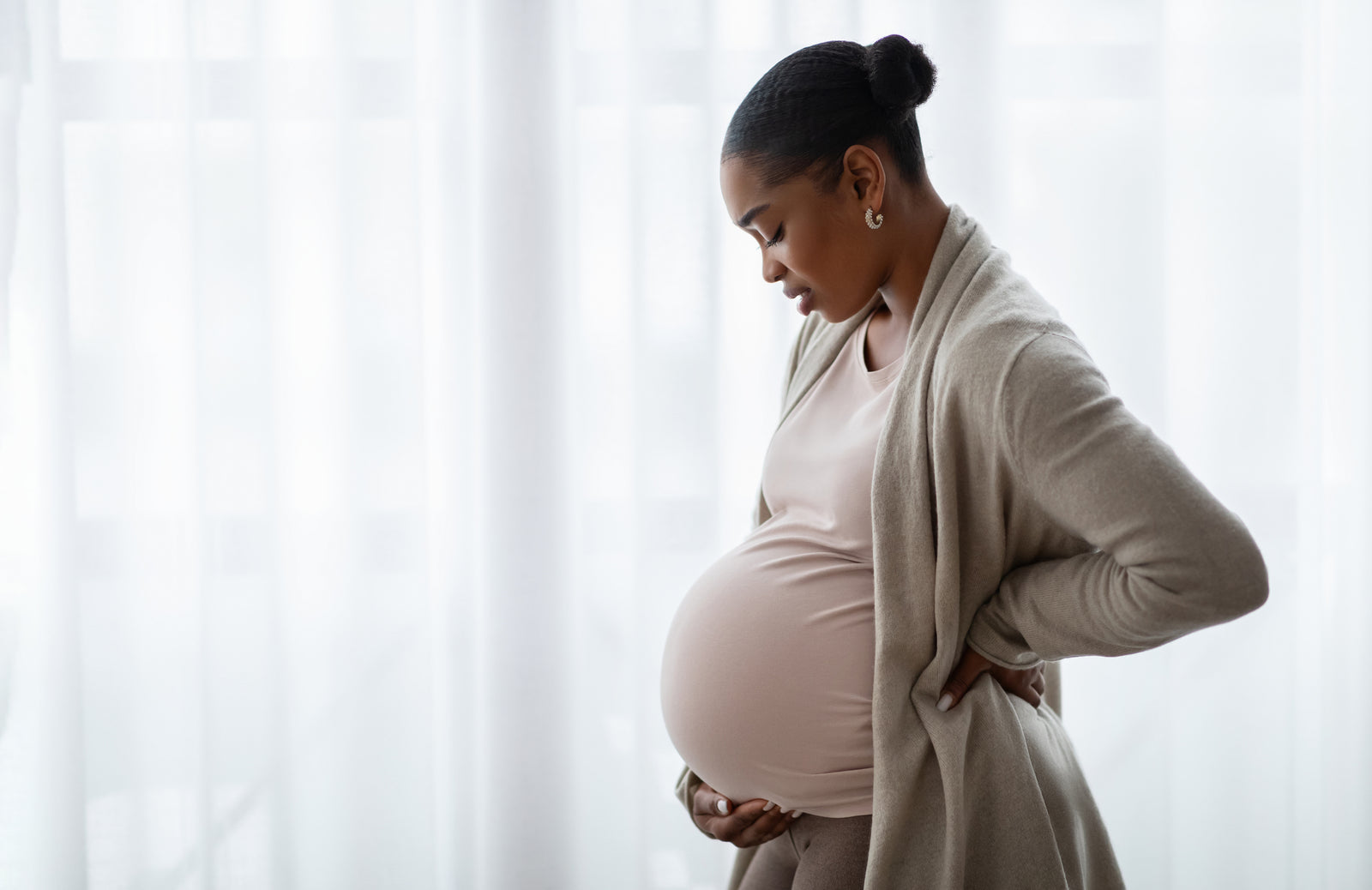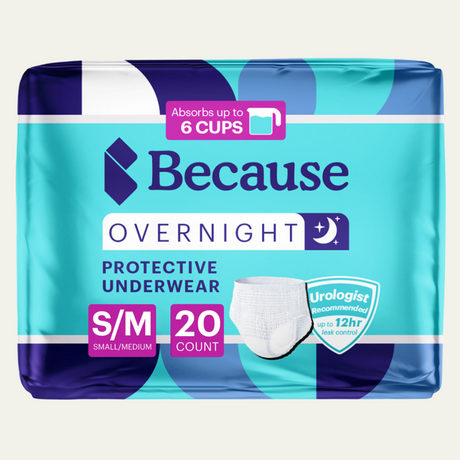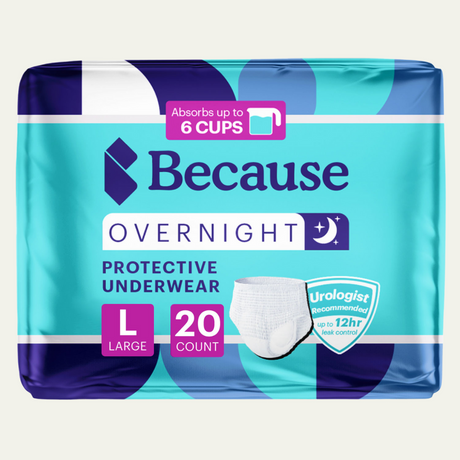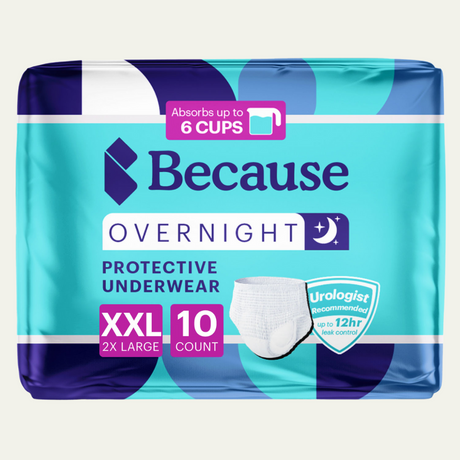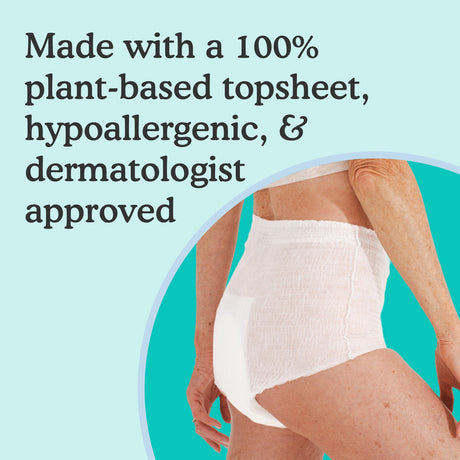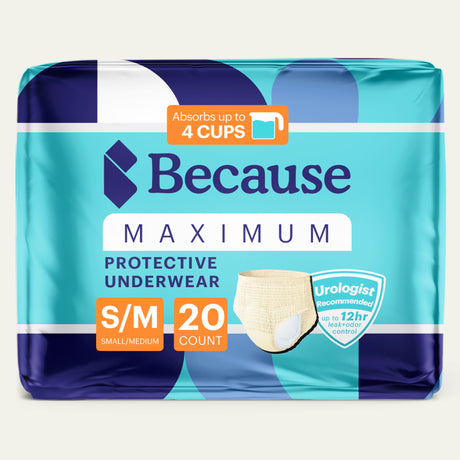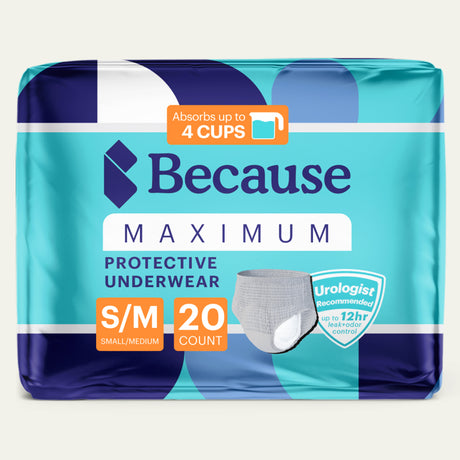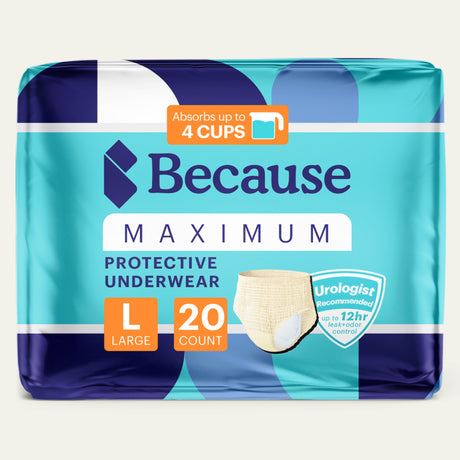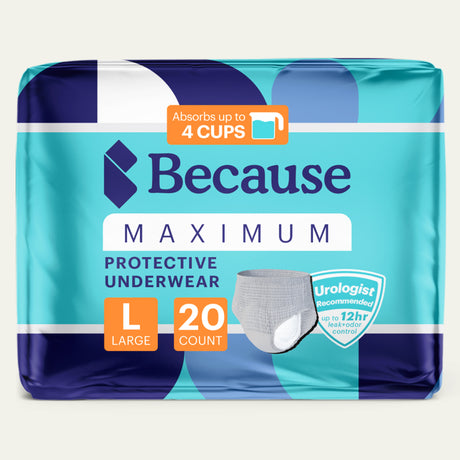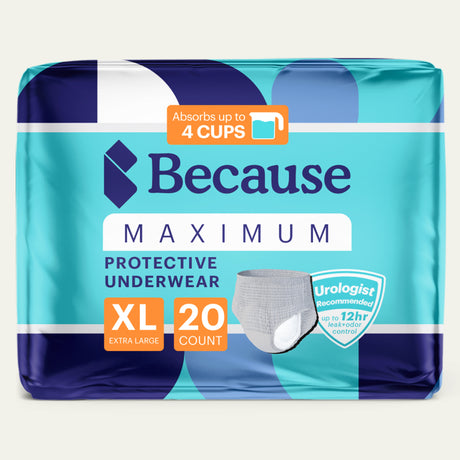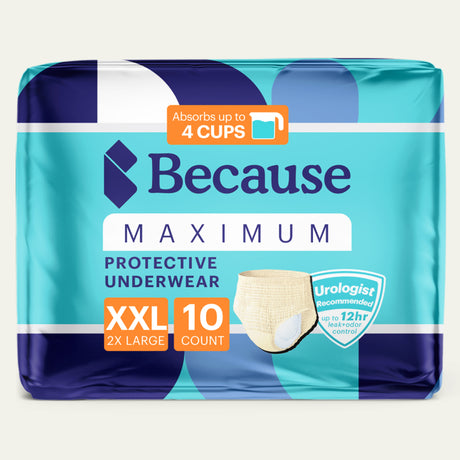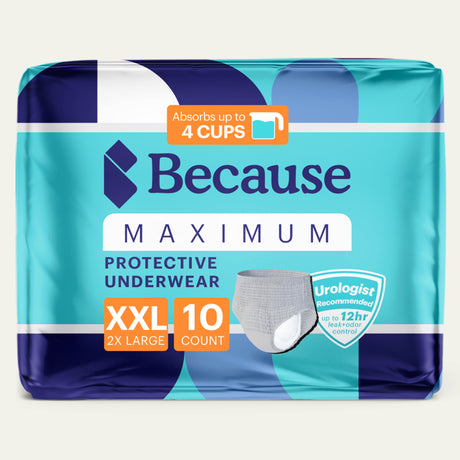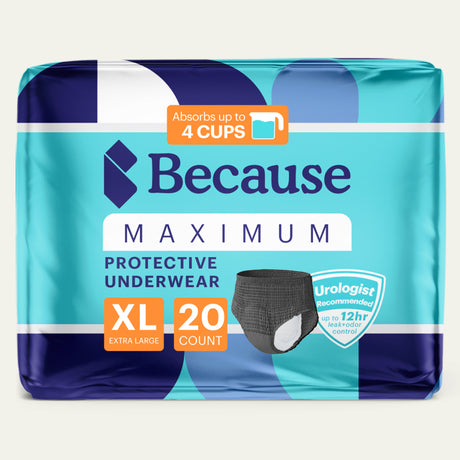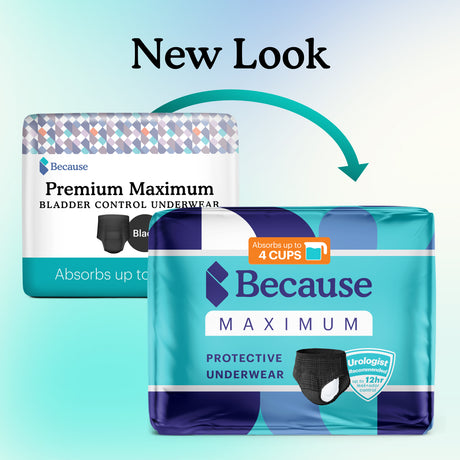Pregnancy is undoubtedly a wondrous journey, marked by a multitude of changes in the body. Amidst these transformations, there's a topic that's often sidelined or brushed off with humor: bladder leaks. Surprisingly, incontinence affects a significant 40%-50% of pregnant individuals, yet there's a growing consensus among experts that it doesn't have to be an inevitable part of the journey. By fostering open conversations about bladder health before, during, and after pregnancy, we can take proactive steps to prevent and manage incontinence, ultimately enhancing the overall experience of motherhood.
In this blog, we'll delve into the causes of pregnancy incontinence, explore effective prevention strategies, and provide practical tips and exercises to help you regain control and confidence during this special time. Whether you're experiencing occasional leaks or seeking proactive measures, this resource aims to empower you with the knowledge and tools to navigate pregnancy with comfort and ease.

Understanding Pregnancy Incontinence
In this section, we'll delve into the intricacies of pregnancy incontinence, exploring its various forms and shedding light on the physiological changes that contribute to this common condition.
What is Pregnancy Incontinence?
Pregnancy incontinence refers to the involuntary leakage of urine during pregnancy, a condition that affects many expectant mothers. It commonly occurs due to the pressure exerted on the bladder by the growing uterus, as well as hormonal changes that weaken the pelvic floor muscles. Understanding the nuances of pregnancy incontinence is crucial for effectively managing and addressing this issue throughout the course of pregnancy and beyond.
Types of Pregnancy Incontinence
During pregnancy, expectant mothers may experience various types of incontinence, including:
- Stress incontinence: This type of incontinence is characterized by the leakage of urine during activities that increase abdominal pressure, such as coughing, sneezing, laughing, or lifting heavy objects. It often occurs due to weakened pelvic floor muscles and increased pressure on the bladder.
- Urge incontinence: Also known as overactive bladder, urge incontinence involves a sudden and intense urge to urinate, followed by involuntary leakage before reaching the toilet. This can be triggered by the pressure exerted on the bladder by the growing uterus and hormonal changes affecting bladder control.
- Mixed incontinence: Some pregnant individuals may experience a combination of stress and urge incontinence, where both types of symptoms occur simultaneously or interchangeably.
Understanding the specific type of incontinence experienced during pregnancy is essential for implementing targeted management strategies and seeking appropriate medical guidance when needed.
Causes and Triggers of Pregnancy Incontinence
In this section, we'll explore the underlying factors contributing to pregnancy incontinence, including hormonal changes, anatomical adjustments, and the physiological impact of the growing fetus on the urinary system.
Hormonal Changes and Their Impact
Hormonal fluctuations during pregnancy can significantly impact bladder control, contributing to the onset or exacerbation of incontinence symptoms. Increased levels of progesterone and relaxin, hormones essential for supporting pregnancy, can lead to relaxation of the pelvic floor muscles and ligaments, potentially weakening the muscles responsible for urinary control. Additionally, these hormonal changes may affect bladder function, increasing urinary frequency and urgency.
Pressure on the Bladder: Growing Baby and Uterus
As pregnancy progresses, the growing fetus and expanding uterus exert increasing pressure on the bladder, which can contribute to the development of incontinence. This pressure can compress the bladder, reducing its capacity and causing involuntary leakage of urine. Additionally, as the uterus grows larger, it may shift positions and put additional strain on the pelvic floor muscles, further compromising urinary control.

Tips for Preventing Pregnancy Incontinence
In this section, we'll discuss practical strategies and lifestyle modifications aimed at preventing and minimizing pregnancy incontinence. By implementing these tips, expectant mothers can proactively strengthen their pelvic floor muscles, adopt healthy habits, and optimize bladder health to reduce the risk of experiencing urinary leakage during pregnancy.
Hydration Habits: Finding the Right Balance
Maintaining optimal hydration during pregnancy is crucial for overall health, but finding the right balance is key to managing incontinence. While it's essential to stay adequately hydrated, excessive fluid intake can exacerbate urinary frequency and urgency, potentially worsening incontinence symptoms. Striking a balance by spreading out fluid intake throughout the day and avoiding large amounts close to bedtime can help manage bladder function and minimize the risk of leaks. Additionally, reducing caffeine and alcohol consumption, which can irritate the bladder, may also be beneficial in maintaining bladder control during pregnancy.
Dietary Adjustments for Bladder Health
Making dietary adjustments can play a significant role in promoting bladder health and reducing the likelihood of pregnancy incontinence. Incorporating foods rich in fiber, such as fruits, vegetables, and whole grains, can help prevent constipation, which can put pressure on the bladder and exacerbate incontinence symptoms. Additionally, avoiding spicy and acidic foods, as well as artificial sweeteners, can help reduce bladder irritation and urinary urgency. Maintaining a balanced diet and paying attention to bladder-friendly foods can contribute to better bladder control and overall comfort during pregnancy.
Exercises to Strengthen Pelvic Floor Muscles
One of the most impactful actions you can take to lessen or prevent bladder leaks is to start practicing pelvic floor exercises. Commonly known as Kegel exercises, these exercises help strengthen the muscles that support bladder control during pregnancy. These exercises are vital for expectant mothers to maintain pelvic floor strength, improve bladder function, and reduce the risk of pregnancy-related incontinence.
Kegel Exercises: Your Best Friend
Kegel exercises, often hailed as the cornerstone of pelvic floor rehabilitation, are a pregnant person's best ally in combating incontinence. These simple yet powerful exercises involve contracting and relaxing the pelvic floor muscles, effectively strengthening them over time. By incorporating Kegels into your daily routine, you can enhance bladder control, support the growing uterus, and even facilitate smoother childbirth. Consistency is key, so make Kegel exercises a regular part of your prenatal wellness regimen for optimal results.
Kegel exercises can be done from the comfort of your own home. Here is a step-by-step guide on how to perform Kegels:
- Find the Right Position: Start by finding a comfortable position to perform the exercise. You can sit, stand, or lie down, whichever is most comfortable for you.
- Identify Your Pelvic Floor Muscles: To do this, imagine you're trying to stop the flow of urine or prevent passing gas. The muscles you engage to do this are your pelvic floor muscles.
- Contract Your Pelvic Floor Muscles: Once you've identified your pelvic floor muscles, gently tighten and lift them upward. Be careful not to squeeze your thighs, buttocks, or abdomen while doing this.
- Hold the Contraction: Hold the contraction for about 5 seconds, or as long as feels comfortable for you. Focus on keeping your breathing steady and avoiding any straining.
- Release and Relax: After holding the contraction, slowly release and relax your pelvic floor muscles. Allow them to return to their resting state.
- Repeat: Aim to complete 10-15 repetitions of this exercise in one session. Gradually increase the duration of each contraction as your pelvic floor muscles become stronger.
- Consistency is Key: Perform Kegel exercises regularly, ideally 3 sets of 10-15 repetitions each day, to see improvements in pelvic floor strength and bladder control over time.
Remember, it's important to perform Kegel exercises correctly to reap their benefits. If you're unsure whether you're doing them correctly or have any concerns, consider consulting with a healthcare provider or pelvic floor physical therapist for guidance.
Additional Pelvic Floor Strengthening Techniques
In addition to Kegel exercises, there are several other techniques and exercises that can help strengthen the pelvic floor muscles during pregnancy. One effective technique is pelvic tilts, where you lie on your back with knees bent and gently tilt your pelvis upward, engaging the pelvic floor muscles. Squats are another beneficial exercise as they engage multiple muscle groups, including the pelvic floor. Yoga and Pilates can also be valuable, as they focus on core strength and stability, which includes the pelvic floor. Incorporating these additional pelvic floor strengthening techniques into your routine alongside Kegels can provide comprehensive support for bladder control and overall pelvic health during pregnancy.
Lifestyle Changes to Combat Pregnancy Incontinence
Lifestyle adjustments and habits can help effectively mitigate pregnancy-related incontinence when applied alongside pelvic floor exercises. Here are some lifestyle changes you can make to combat incontinence:
- Maintain a healthy weight
- Eat a healthy, bladder-friendly diet
- Adopt a neutral posture to alleviate pressure on pelvic floor
- Practice proper hydration
- Manage constipation
- Avoid heavy lifting
- Empty your bladder regularly and completely to prevent retention
Incontinence Protection Products
Incontinence products like pads or absorbent underwear can provide comfort and peace of mind by managing leaks and offering protection against unexpected accidents, allowing you to focus on their pregnancy without worrying about discomfort or embarrassment. It's important to choose products designed for your body and your leaks. Different companies make different types from underwear to pads to bed pads. Shop around and find out what works best for you. However, incontinence pads are not the same as menstrual pads and it is not recommended for people with incontinence to use them for bladder leaks. Using menstrual pads in the place of incontinence pads can increase the chance of leaks and odors.
Seeking Professional Help: When to Consult a Healthcare Provider
Seeking professional help is crucial for effectively managing pregnancy incontinence and ensuring optimal bladder health throughout the prenatal and postpartum periods. Regular check-ups with a healthcare provider during pregnancy allow for the monitoring of bladder function and the identification of any underlying issues early on.
If persistent incontinence persists despite lifestyle changes and pelvic floor exercises, consulting a healthcare provider is essential to explore further treatment options. Treatment modalities may include pelvic floor physical therapy, bladder training techniques, and in some cases, medications or minimally invasive procedures to address specific bladder dysfunction.
Furthermore, if incontinence occurs postpartum, it's important to seek prompt medical attention to address any complications arising from childbirth and to receive appropriate management strategies tailored to the individual's needs. Open communication with healthcare providers facilitates timely interventions and ensures comprehensive care to promote bladder health and overall well-being during the perinatal period.
If you're struggling with incontinence, join our private support group today!
Women's Incontinence Support Group
Sources:
(2023, Aug. 31). Pregnancy and Bladder Control, The Cleveland Clinic. https://my.clevelandclinic.org/health/diseases/16094-pregnancy-and-bladder-control
